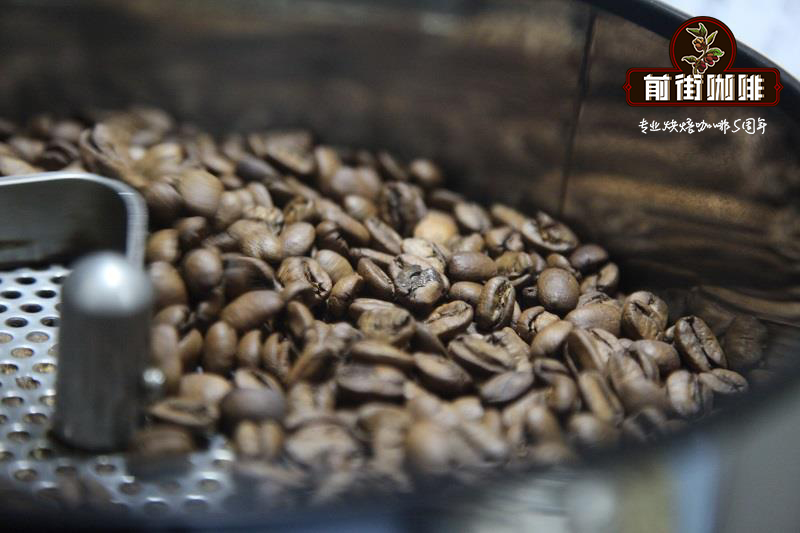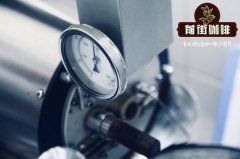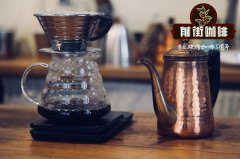The Mechanism and Environment of Coffee roasting explain the detailed steps of coffee bean roaster

Professional coffee knowledge exchange more coffee bean information please follow the coffee workshop (Wechat official account cafe_style)
Coffee bean roaster brand _ coffee bean roaster price _ coffee bean roaster guide
Recently, a monitoring device has been installed on the coffee bean roaster-air temperature.
With this device, you can observe more coffee roasting response mechanisms and control environment.
First explain the stages of coffee roasting.
Preheating stage: the bean baking machine needs to be heated to a certain extent before baking, which will be different due to the baking mechanism. It is necessary to fully heat the pot to a certain temperature before it can drop the beans. There is no certain criterion for this temperature. It depends on the degree of relationship between the bean baker and the bean roaster.
Steaming stage: coffee roasting starts immediately after entering the beans, because the coffee beans contain about 11 murmur12% water content. At this stage, we keep the bean temperature rising continuously through firepower heating and throttle control. Generally speaking, when the monitored bean temperature reaches 140 ℃, the moisture in the bean body is ready to be discharged, so this stage is called the heating steaming stage to keep the moisture content in the bean body.
Dehydration stage: at this stage, the color of the bean body has gradually turned yellow, and the silver skin on the surface of the bean has gradually fallen off. this stage can be controlled by the throttle to discharge an appropriate amount of water vapor and exfoliated silver skin from the baking environment. let the bean body enter the initial baking chemical reaction with water content at a certain temperature.
Roasting stage: when the temperature reaches 160℃ or so, coffee beans have entered the role of ripening and roasting, this stage has the grain aroma of baked bread and the roasting stage of deeper yellowish brown beans, this stage mainly continues to accumulate enough energy to enter the burst stage of coffee roasting, so the baking stage should allow continuous stable firepower and heating and smoke control stage.
The first explosion stage: the most important and rapid response of all coffee roasting is the explosion stage when the coffee begins to burst. Since the first explosion stage is exothermic, it is necessary to turn off the firepower at the beginning of the explosion so that the baking room can maintain enough heating energy. and the smoke produced by the explosion also needs to be forced out of the baking room through the throttle.
In fact, when the energy required for baking has gradually decreased after a dense explosion, it is necessary to increase the firepower again in due course, and then it is also the next stage when the coffee beans are ready to bake, and before placing the beans, we do not want the coffee beans to react too violently and there will often be the so-called heating and sliding stage, so this part of the external energy supplement gradient of the reliable air temperature and bean temperature difference, to adjust the control mechanisms such as firepower, heating and booking baking time.
The above are the stages of baking. Extract a paragraph of literature about the mechanism and control environment of baking reaction.
Ambient temperature (ET): there is a temperature range for a specific chemical reaction of roasted coffee, which is the ambient temperature for the reaction that produces good flavor.
System energy (BTU): the baking process provides the energy BTU gradient (time-heating), which determines the chemical reaction change rate, which is related to the system energy transfer efficiency (STE). There is an optimal reaction rate (BRR), which provides better performance in the coffee cup.
The optimal reaction rate (BRR): there is a linear relationship between the degradation rate of trigonelline and the derivative rate of nicotinic acid when it is concentrated in the ambient temperature (ET). When the baking reaction distribution is different under ET/BTU/STE, the ambient temperature (ET) of the optimal reaction rate (BRR) (ET) is 205 ℃ 218 ℃ by default.
Maximum ambient temperature (MET): when sucrose caramelization reaction begins not to lose temperature, otherwise there will be thermal hysteresis effect, so it is necessary to ensure the temperature of the baking environment to provide system energy transfer for chemical reaction, and too high will cause the optimal reaction rate (BRR) to be too fast, so MET is generally as high as 271℃.
Combined with air temperature and bean temperature, we should be able to understand such a control environment. Finally, the two reactions of two coffee roasting are listed as follows:
Caramelization reaction
The sugar in coffee beans is caramelized at about 170 ℃ 200 ℃, in which the melting point of sucrose (186 min) is also the temperature at which coffee beans are roasted. The product of caramelization is divided into two parts:
1. Sugar dehydrated caramel and color, so part of the coffee color is caramel color.
two。 The pyrolysis is mainly caused by some volatile aldehydes and ketones. As for what it tastes like, you can feel it with a piece of black sugar and granulated sugar in your mouth.
Generally, baking aroma and caramel color are produced in the caramelization reaction, as well as other aromatic substances such as maltol, Cyclotene, furan compounds and so on. These compounds can also be found in red wine, fruit juice, cream and other foods.
However, excessive caramelization in the baking process will cause carbonization and make the coffee bitter. If the caramel is not enough, it will make the aroma monotonous and lack of layers.
Mena reaction
The most important thing in coffee roasting is Mena reaction, and Mena reaction (Millard reaction) is also known as amine carbonyl reaction (amino-carbonyl reaction). It is the reaction of reducing sugars (such as glucose, fructose) with amino acids. Generally, coffee roasting has this important food chemical reaction mechanism at about 140℃. When the temperature increases by 10 ℃, the reaction rate increases by 5 times, accompanied by browning.
In addition to sugars, proteins also account for about 11% of the weight of raw beans, and the amino acids contained in these proteins are exactly the raw materials needed in the Mena reaction. Mena reaction refers to the amino acids and reducing sugars (glucose, fructose, lactose, etc.) in food. ) A series of reactions in the heating process. Mena reaction produces a variety of aromatic substances and pigments such as Pyridines, Pyrazines, Oxazoles, Thiazoles, Pyrroles.
Coffee is blessed with a wide variety of complex chemicals, in addition to the above-mentioned compounds, there are other organic acids, inorganic acids, plant bases and so on. Not only sweet and beautiful ingredients, some slightly bitter compounds make coffee flavor have a wider level and change, together to create a unique rich taste of coffee.
When it comes to the roasting of coffee beans, it is a mystery to many people. How on earth did green coffee beans become fragrant coffee beans? It is also baked on the spot at home, obviously the same kind of beans, why do different coffee shops taste different? Let's listen to the details of baked beans.
Now let's take a look at the charm of the master's on-site baking.
Baking steps:
1. Pick beans
In order to bake a pot of good beans, it is necessary to care about the quality of the beans. Before baking beans, take dead fruits that have been eaten by insects, such as black beans, or broken beans, discolored beans, beans that are too small or too big. Pick out the beans that will affect the baking quality, and so on. The process of picking beans can be long or short. Because you need to concentrate on picking out the rotten beans, this is a heavy responsibility that requires patience and eyesight.
two。 Reserve area
Because the number of beans ordered by the guests is so large that they often turn on the machine all day long, there are already most of the ordered beans waiting to be baked, and there are constantly ringing phone calls coming in for emergency orders, or a large number of on-site bookings. So in the preparation area next to the bean dryer, the picked beans lie here safely, waiting for their lives to be transformed into bags of mellow.
3. Feed into beans
Get into the boiler and start baking now! The beans in the preparation area can be poured into the boiler by preheating the boiler before entering the beans.
4. Heat absorption
Beans begin to absorb heat at this stage, and the duration of heat absorption varies slightly from coffee shop to coffee shop, which can be regarded as the personal method of the baking master.
5. Ignition
After the heat absorption is complete, the fire is ready to be heated. During this period, the firepower should be heated to a certain extent. The adjustment of the throttle is directly related to the firepower. As for the size of the firepower, each baker has its own difference. The firepower and duration of coffee beans will directly affect the taste of coffee, because there are many coffee producing areas, and the bean properties of each producing area are different, so the coffee should be roasted well, which is absolutely related to the baker's understanding of the nature of beans.
6. Waiting for an explosion.
In this stage, the master will watch the bean color through the bean roaster in front of the baking machine. According to the bean color, the baking degree of coffee beans will be evaluated. An explosion will occur in the boiler at about 200 degrees Celsius. Listen to the sound. After hearing an explosion, it depends on the bean nature of coffee beans and the water content of each batch of beans to make minor firepower adjustments.
7. Then adjust the throttle (exhaust smoke, exhaust silver skin)
When the coffee berry is ripe, it is a small red cherry-like fruit. After harvest, the fruit needs to be fermented to remove the pulp. After removing the pulp, you can see two opposite coffee raw beans, while the raw bean has two layers of seed coat, the outer skin is called parchment, which will peel off itself in the process of baking. The endothelium is called silver skin, and the silver skin will also peel off and fly away when it explodes. At this stage, the air door is to discharge parchment and part of the exfoliated silver skin. If it is not discharged, the excessive heating of parchment in the boiler will produce a bad smoky smell and then affect the flavor of coffee.
8. Lower bean
The bean spot is also related to the flavor characteristics and water content of coffee beans. The roasting standard of coffee beans in Duti Coffee is based on the eight standards of SCAA, the leading coffee industry in the world. The order from shallow to deep is as follows: Very Light is extremely shallow, Light is shallow (the above is mostly used for cup testing, general coffee does not use this grade of roasting), Moderately Light is shallow (sour taste is obvious. Rarely used), Light Medium light and medium (M-mostly used in fragrant beans such as Yejiashev, Guatemala Vivetnango, Blue Mountain, Costa Rica, Raminita, etc.), Medium (M Peru, Kenya, Yuko, Hawaii Conna, Blue Mountain, etc.), Moderately Dark medium and deep, (M + Mantenin, Indian style Malaba, East Timor organic bean Timo, etc.), Dark Deep (D-espresso), Very Dark very Deep (D espresso)
Delicious coffee beans are out of the oven! When dropping the beans, the coffee beans collided with the cooling table, and the sound was clear and pleasant, as if the coffee beans were cheering that their lives had completely changed.
9. Cooling
After dropping the beans and before bagging, the hot coffee beans must be calmed down on the cooling table. Usually there is still residual heat inside the coffee beans after baking, which may make the coffee beans roast deeper and affect the overall taste of the coffee, so the temperature needs to be lowered quickly and evenly.
10. Although the beans have been picked before baking, there may still be broken coffee beans in the baking process, so we need to pick them out again by hand at this stage, and we are not afraid of a long time to carefully select good coffee and present it to the guests. this is the persistence of fine coffee.
Picture: the differences of each coffee bean: habit firepower, wind power, bean spot, bean quantity, raw bean freshness. All the other factors will affect.
American-made Diedrich Roaster coffee roaster introduces infrared coffee roasting technology
Important Notice :
前街咖啡 FrontStreet Coffee has moved to new addredd:
FrontStreet Coffee Address: 315,Donghua East Road,GuangZhou
Tel:020 38364473
- Prev

Common methods of roasting coffee beans the best type of coffee roaster is.
Professional coffee knowledge exchange more coffee bean information please follow coffee workshop (Wechat official account cafe_style) coffee bean roaster brand _ coffee bean roaster price _ coffee bean roaster guide what is the importance of roasting? The factors affecting the taste of a cup of coffee are raw beans (60%), roasting (30%) and extraction (10%). Good roasting can exert the personality of raw beans to the extreme.
- Next

The popularity list of the top ten coffee machines recommended by the latest edition of coffee brewing appliances in 2018
Professional coffee knowledge exchange more coffee bean information please follow coffee workshop (Wechat official account cafe_style) Coffee utensils coffee filter cup coffee hand pot bean grinder if canned coffee and super coffee can no longer satisfy your taste buds, but do not have so much money and time to spend in the coffee shop often, you might as well prepare a coffee maker and keep it at home! You
Related
- What is the Philharmonic pressure? How to use Philharmonic pressure to make delicious coffee
- Why does a hand grinder have more fine powder than an electric grinder?
- In addition to the hot mom, what is the difference between the versions of EK43 | ditting and Mahdi ek43?
- What kind of equipment do you need to make coffee by hand? Introduction to novice starter cooking equipment tools
- Espresso needs to be ground how thick and thin scale entry Italian Coffee Machine Bean Grinder investigation and Grinding course
- How much does it cost to open a small private cafe? How much does it cost to learn coffee? How to operate it?
- The difference between the flavor characteristics of hand-brewed coffee and coffee maker is hand-brewed coffee really better than coffee maker? Can I use a coffee machine to make coffee beans by hand?
- The difference between 01 and 02 of hario v60 filter cup what is the difference between 01 and 02 filter cup opening and cooking flavor
- What's the difference between the smart cup and the French kettle? Which is better, the French kettle or the Smart Cup?
- What's the difference between a smart cup and a V60 filter cup? The difference between the taste of smart cup and hand-brewed coffee

